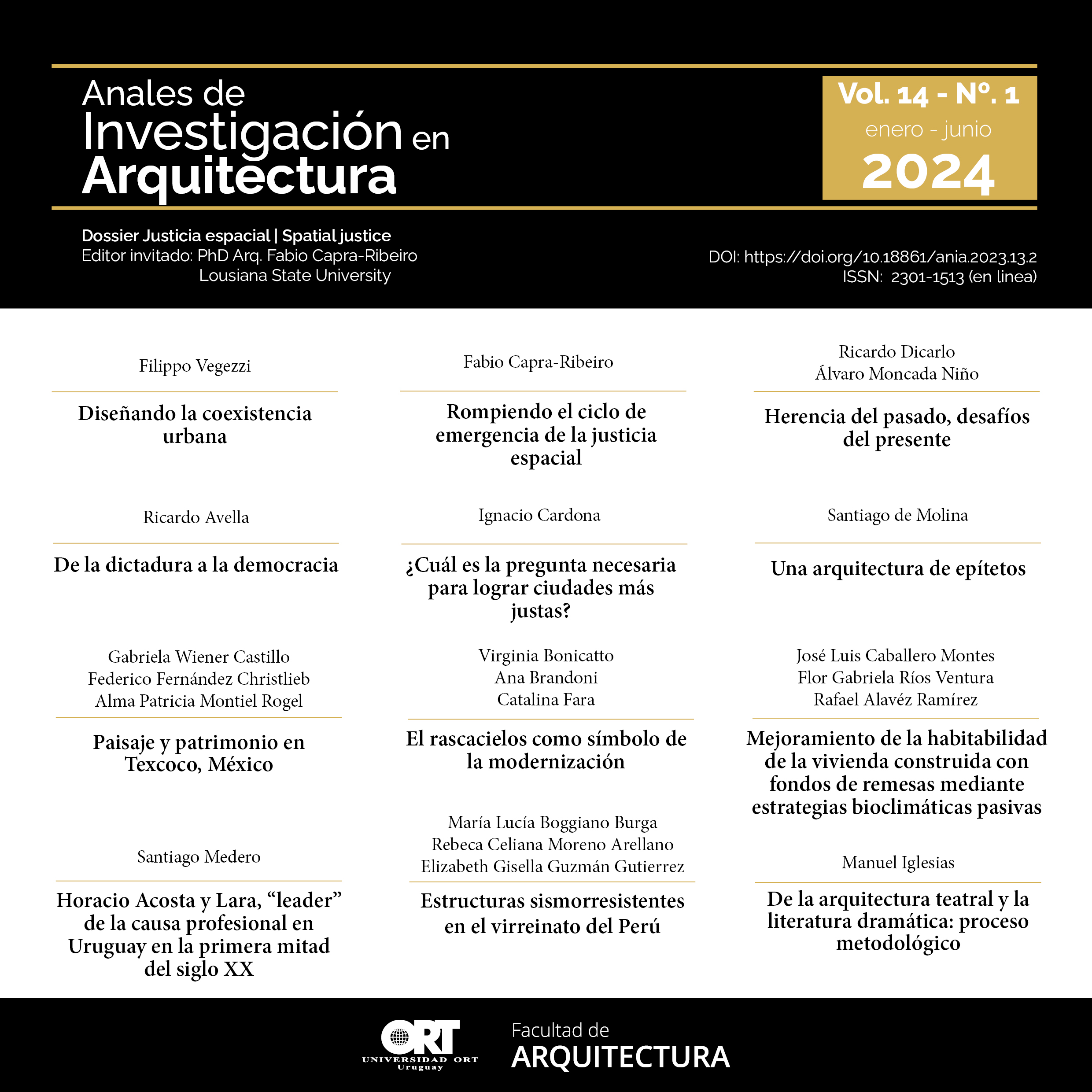From Dictatorship to Democracy
Venezuela’s Rural Development Policies before and after Agrarian Reform
DOI:
https://doi.org/10.18861/ania.2024.14.1.3819Keywords:
Rural development, Rural planning, Colonization, Land reform, VenezuelaAbstract
In December 1961, Venezuela signed a technical cooperation agreement with the State of Israel in the context of its agrarian reform. As a result, a group of Israeli experts provided assistance for several years in a series of regional projects and in building local expertise in rural development. Their involvement helped Venezuela’s agrarian reform quickly gain momentum; however, it would be a mistake to believe that this achievement was solely due to the Israeli contribution. By highlighting the differences and continuities in some official policies concerning rural development in Venezuela before and after the passing of the Agrarian Reform Law of 1960, this paper will demonstrate that while Venezuelan democracy wanted to make a clean break from the past and promoted important structural changes that provided a greater degree of spatial and social justice in the countryside, there were also many continuity elements involving previous rural development policies. The technical expertise that made the agrarian reform possible, as well as the set of ideas and ideals that propelled its implementation, were built in part on a succession of previous experiences that paved the way for what was to come.
Downloads
References
Berglund, S. (1980). The "Musiues" in Venezuela: immigration goals and reality, 1936-1961 [Doctoral dissertation, University of Massachusetts Amherst]. https://doi.org/10.7275/jxx1-h426
Betancourt, R. (1956). Venezuela, Política y Petróleo. Editorial Senderos.
Blackmore, L. (2017). Spectacular Modernity: Dictatorship, Space, and Visuality in Venezuela, 1948-1958. University of Pittsburgh Press.
Calvo Albizu, A. (2018, December 9). ¿SABÍA USTED… que en 1958, hace ya 60 años, se termina la construcción de la Casa de Italia en Caracas? Fundación Arquitectura y Ciudad. https://fundaayc.wordpress.com/2018/12/09/sabia-usted-32/
Contreras, W., Owen de Contreras, M. & Contreras Owen, A.A. (2015). La vivienda rural venezolana en la dimensión de la sostenibilidad. Laboratorio de Sostenibilidad y Ecodiseño UPV-ULA, Centro de Investigación de la Vivienda y el Hábitat. https://www.researchgate.net/publication/305489168_La_Vivienda_Rural_Venezolana_en_la_Dimension_de_la_Sostenibilidad
Decreto Nro. 84 (Se establece un Programa Nacional de la Vivienda Rural). Gaceta oficial de la República de Venezuela N.º 25.610 (1958, March 14).
División de Malariología (1957). Vivienda Sana. División de Malariología del Ministerio de Sanidad y Asistencia Social.
Eidt, R.C. (1975). Agrarian Reform and the Growth of New Rural Settlements in Venezuela. Erdkunde 29(2), 188133. https://www.jstor.org/stable/25641613
Griffing, S.M., Villegas, L., & Udhayakumar, V. (2014). Malaria Control and Elimination, Venezuela, 1800s–1970s. Emerging Infectious Diseases, 20(10), 16911696. https://doi.org/10.3201/eid2010.130917
Hill, G.W. & Beltrán, G. (1952, February 19). Land Settlement in Venezuela: With Especial Reference to the Turén Project. [Conference presentation]. Second Annual Conference of the Asociación Venezolana Para el Avance de la Ciencia, Caracas, Venezuela.
Kay, C. (1998). Latin America’s Agrarian Reform: Lights and Shadows. Land Reform, Settlement and Cooperatives 2: 8–31.
Klayman, M.I. (1970). The Moshav in Israel: a Case Study of Institution-Building for Agricultural Development. Praeger Publishers.
Latham, M.E. (1998). Ideology, Social Science, and Destiny: Modernization and the Kennedy-Era Alliance for Progress. Diplomatic History 22(2): 199–229. https://www.jstor.org/stable/24913658
Laufer, L. (1967). Israel and the Developing Countries: New Approaches to Cooperation. Twentieth Century Fund.
Ley de Reforma Agraria, Gaceta oficial de la República de Venezuela N.º 611 extraordinario (1960, March 19).
MAC (1959). La colonización agraria en Venezuela: 1830–1957. Dirección de Planificación Agropecuaria del Ministerio de Agricultura y Cría.
Machado, Planificación de comunidades rurales (unpublished typewritten manuscript) private property of Ernestina Fuenmayor.
Maos, J.O. (1984). The Spatial Organization of New Land Settlement in Latin America. Westview Press.
Párraga García, G. (2001). Arrendamiento de Tierras y Legislación Agraria en Venezuela Durante el Período 1941–1948. Saber 13(1):74–81. http://saber.udo.edu.ve/index.php/saber/article/view/673
Pedregal, H. (1971). Plan de investigación BANAP-SAS (Tomo 1). Banco Nacional de Ahorro y Préstamo y Ministerio de Sanidad y Asistencia Social.
Ragone, V.P. (2015). Italia en Caracas: proyecto de conservación, restauración y puesta en valor de la Casa de Italia [Unpublished Master’s Thesis, Universidad Central de Venezuela]. https://www.academia.edu/65718105/ITALIA_EN_CARACAS
Schuster F., J.F. (1972). Rural Problem-Solving Policies in Venezuela, With Special Reference to the Agrarian Issue. Land Tenure Center, University of Wisconsin-Madison. https://minds.wisconsin.edu/handle/1793/56709
Texera Arnal, Y. (2017). El riego agrícola en Venezuela en archivos de la Dirección de Obras Hidráulicas del Ministerio de Obras Públicas (1936-1960). Revista Geográfica Venezolana 58(1), 184–197. http://erevistas.saber.ula.ve/index.php/regeoven/article/view/11293
Tinker Salas, M. (2009). The Enduring Legacy: Oil, Culture, and Society in Venezuela. Duke University Press.
Weitz, R. (1987). “Rural Development: the Rehovot Approach.” Geoforum 18(1), 21–36. https://doi.org/10.1016/0016-7185(87)90018-2
Published
How to Cite
Issue
Section
License
Copyright (c) 2023 Ricardo Avella

This work is licensed under a Creative Commons Attribution 4.0 International License.
The journal and its contents are licensed under the Creative Commons - Attribution 4.0 International License (CC BY 4.0). It is possible to copy, communicate and publicly distribute its content as long as the individual authors and the name of this publication are cited, as well as the publishing institution (Universidad ORT Uruguay).


